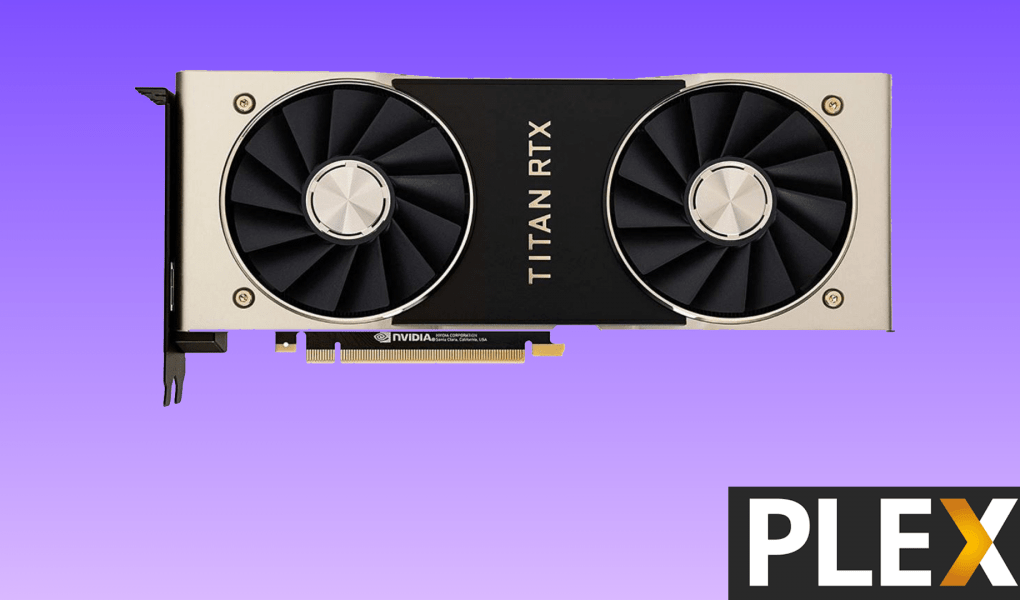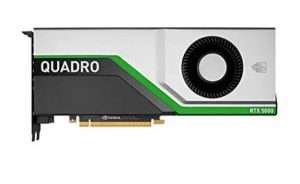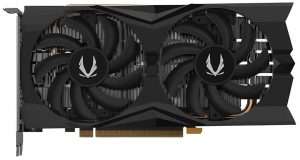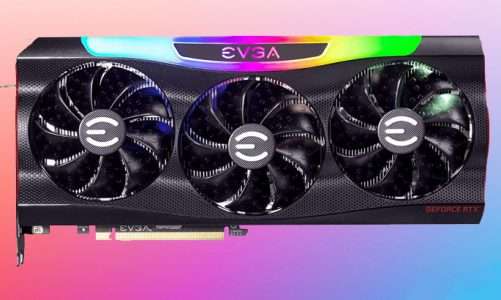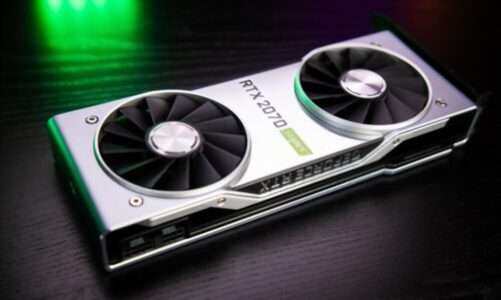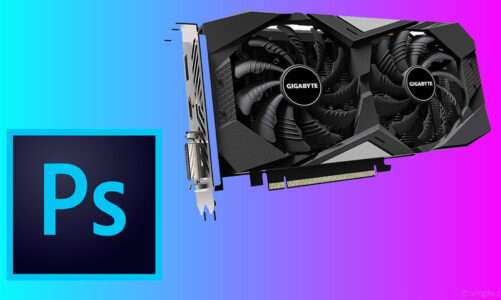Quick Navigation
GPU Republic is reader-supported. We follow a strict editorial process and put hours of research into testing, reviewing, analyzing & comparing the best products that we can find so you can make the most informed decisions. In the event you choose to buy something from one of the links on our site, we may make a commission at no extra cost to you. Whatever products we recommend, it’s because we truly believe in them, not because of the small commission we may receive. Please don’t buy any of these products unless you actually think that it would fit your needs.
What is Plex?
Plex is the most popular streaming tool. The role of Plex is to transcode any type of media file into a playable format on a server. Plex’s hardware acceleration gives you enough headroom to steam your content online using powerful graphics cards from Nvidia and AMD.
For Plex video transcoding, Nvidia GPUs are more reliable as compared to AMD. Modern Nvidia GPUs come with NVENC to take off the load from your CPU and shift it to your GPU for better streaming.
The NVENC technology from Nvidia is an ideal solution for all hardware-based transcoding workloads. Applications like Plex take full advantage of features like NVENC and NVDEC for high-end transcoding.
Generally, high-end graphics cards like RTX 3090, RTX 3080, RTX 2080, and Quadros are ideal for transcoding due to their higher bitrate.
Also, workstation graphics cards like the ones in the Nvidia Quadro Series yield better results in video transcoding.
AMD GPUs are also fine to go with, but only if you are concerned with Plex 1080p transcoding. If you want to scale up to 1440p or 4K Plex transcoding, then we highly recommend going with Nvidia.
AMD has its own VEC (Video Encoding Engine) to deal with Plex. But at the end of the day, Nvidia’s video transcoding is a more feasible option for hardware acceleration in Plex.
No matter whichever brand you go with, all you need is to opt for a powerful graphics card to handle Plex streaming.
Supported Video Formats for Plex
- Resolution: 1080p
- Video codec: H.264 & AAC
- Frame Rate: 30fps
Quick Comparison
| Graphics Card | Memory | Boost Clock Speed | Memory Clock | Supported Formats |
| NVIDIA Quadro P2200 | 5GB GDDR5X | 1493 MHz | 5Gbps | H.264 & H.265 |
| NVIDIA Quadro RTX 5000 | 16GB GDDR6 | 1815 MHz | 14Gbps | H.264 & H.265 |
| Zotac GeForce GTX 1660 | 6GB GDDR5 | 1785 MHz | 14Gbps | H.264 & H.265 |
| Nvidia Titan RTX | 24GB GDDR6 | 1770 MHz | 14Gbps | H.264 & H.265 |
The Best Graphics Cards for Plex Video Transcoding
Here are the top GPUs to consider:
NVIDIA Quadro P2200 – Best Budget GPU for Plex 1080p Streaming
Key Specs:
Base Clock Speed: 1000 MHz | Boost Clock Speed: 1493 MHz | CUDA Cores: 1280 | Video Memory: 5GB GDDR5X | Memory Interface: 160-bit | Memory Clock: 5 Gbps | Video Output: x4 DisplayPort | Supported Video Formats: H.264 & H.265
If you are looking for a Plex Server GPU that can easily handle 1080p and even 4K streams, then the Nvidia Quadro P2200 is the most feasible option to go with.
You can easily stream up to four 4K (68MBit) and 17 1080p (10MBit) streams on Quadro P2200 without any issue. This graphics card is a worthy upgrade over the previous Quadro P2000 graphics card.
The Nvidia Quadro P2200 comes with enough resources to handle complex transcoding workloads.
There’s 5GB of GDDR5X memory, a boost clock speed of 1493 MHz, and 1280 CUDA cores on this chip for efficient processing. This mid-range GPU is also good for HD video editing and 3D modeling workload.
All in all, the Quadro P2200 is a low-power consumer GPU with 75W TDP. This means you really don’t need a high-end power supply to run this graphics card.
Moreover, this chip supports two popular video formats H.264 and H.265 used in plex streaming.
Finally, the P2200 gives you the perfect price to performance ratio as compared to other GPUs in the Quadro Series.
NVIDIA Quadro RTX 5000 – A Reliable GPU for 4K Video Transcoding
Key Specs:
Base Clock Speed: 1620 MHz | Boost Clock Speed: 1815 MHz | CUDA Cores: 3072 | Video Memory: 16GB GDDR6 | Memory Interface: 256-bit | Memory Clock: 14 Gbps | Video Output: x4 DisplayPort, 1x USB Type-C | Supported Video Formats: H.264 & H.265
The Nvidia Quadro RTX 5000 is a strong graphics card to deal with complex transcoding workloads. This chip is built on Nvidia’s Turing architecture and has the ability to encode and decode at H.265 (HEVC) 4:4:4 like all other high-end GPUs.
It’s a more reliable option for transcoding multiple 4K streams to 1080p (10MBits) streams on a single Plex server.
At least your clients can expect a smooth and buffering free stream with this GPU. But at the same time, this is an expensive graphics card to get for a plex server.
There are 3072 CUDA cores and video memory of 16GB GDDR6 memory on this GPU to tackle the toughest transcoding workload.
Moreover, the 14 Gbps memory clock makes this chip faster in streaming your media. Also, there’s a boost clock speed of 1815 MHz on this video card for faster computing under a heavy workload.
Overall, Nvidia Quadro RTX 5000 is a powerful and power-hungry graphics card. If you go with this GPU, make sure you have a high-end power supply in your Plex workstation to fuel this beast.
If you need to stream multiple 4K videos on your Plex server, this is the GPU that you must go with. It’s a little bit expensive GPU to get, but it’ll make your plex transcoding experience future-proof.
Zotac GeForce GTX 1660 – Best Mid-Range Transcoding GPU
Key Specs:
Base Clock Speed: 1530 MHz | Boost Clock Speed: 1785 MHz | CUDA Cores: 1408 | Video Memory: 6GB GDDR5 | Memory Interface: 192-bit | Memory Clock: 14 Gbps | Video Output: 3x DisplayPort, 1x HDMI | Supported Video Formats: H.264 & H.265
The GTX 1660 sits in the budget range of most consumers in the market. And when it comes to looking for the graphics card meant for plex servers, you’ll find the GTX 1660 in the list.
It’s a great GPU for transcoding twenty 1080 streams to 720p streams simulation. Spending a little bit more cash can get you a “Ti” version of this graphics card, and obviously, with that, you can expect a bit more push in transcoding performance.
In terms of specs, the GTX 1660 packs 6GB of GDDR5 memory on a 192-bit interface. Right out of the box, you get a base clock speed of 1530 MHz and a memory clock speed of 14 Gbps.
The GTX 1660 consumes less power as compared to the GTX 1660 Ti version. The thermals on this card are great and you’ll find it operating in complete silence even under heavy transcoding workloads.
Finally, the GTX 1660 gives lets you stream five 4K streams on a Plex server as compared to Quadro P2200 that only supports four streams.
Nvidia Titan RTX – Extremely Powerful Graphics Card for Plex Servers
Key Specs:
Base Clock Speed: 1350 MHz | Boost Clock Speed: 1770 MHz | CUDA Cores: 4608 | Video Memory: 24GB GDDR6 | Memory Interface: 384-bit | Memory Clock: 14 Gbps | Video Output: 3x DisplayPort, 1x HDMI, x1 USB Type-C | Supported Video Formats: H.264 & H.265
The Titan RTX is based on a TU102 graphical processor delivering exceptional performance in dedicated streaming and complex video editing.
With the power of this graphics card, you can stream around 20 4K streams with this graphics card on your Plex server. Moreover, you can transcode over 48 1080p streams into 720p streams using Titan RTX.
This graphics card packs 24GB of GDDR6 memory which is similar to that of the all-time powerful RTX 3090.
Now with this much higher VRAM, you also get your hands on higher 672 Mb/s bandwidth to handle large video files on a Plex server. Also, the Titan RTX shows up as an ideal GPU for deep learning, high-end video editing, etc.
With all high-end specs packed inside, the Titan RTX is an expensive card. No doubt, this card is truly meant for 4K plex transcoding. It packs more power as compared to Nvidia Quadro RTX 5000 GPU on the list.
But there’s a huge price difference in both of these cards as well. The Quadro RTX 5000 can also stream 4K media and is way cheaper than the Titan RTX.
Unless you make the most use out of a video card with 24GB VRAM like the Titan RTX, don’t go for it. The Quadro RTX 5000 is still enough to handle your Plex server needs for now.
However, if you go with the Titan RTX, you won’t need to upgrade your Nas or Plex server with a new graphics card, at least for a few more years.
How many 4K streams are supported by these GPUs?
| GPU | Supported 4K Streams on Plex |
| NVIDIA Quadro P2200 | 4 |
| NVIDIA Quadro RTX 5000 | 11 |
| Zotac GeForce GTX 1660 | 5 |
| Nvidia Titan RTX | 20 |
Verdict
Finally, we’ve reviewed the most reliable GPUs for Plex transcoding in this guide. All of these cards deliver ideal performance for the price they come at.
As far as our recommendation is concerned, if you own a small Plex server with 1080p or 720p media streaming, then GTX 1660 is the right option for you.
And if you need a GPU for 4K Plex streaming, then Quadro RTX 5000 gives you the most value for your investment.
FAQs
Does GPU help with transcoding?
Yes, if the transcoding is GPU accelerated, then you can get the most out of it by using a powerful graphics card. The choice is yours, either you can use an Nvidia or AMD GPU, however, technically Nvidia chips are way better at handling transcoding workloads as compared to AMD.
How much RAM do I need for Plex transcoding?
Well, the sweet spot these days is to have at least 16GB of ram in your Plex server. When a Plex server is transcoding a specific file, it takes the file out of the transcode folder and divides it into different chunks of data, then transcodes and throws the file back into the original transcode folder.
These video chunks can range anywhere between 7MB/s for a standard video to 200+ MB/s for a 1080p video.
And in case you are transcoding a 4K video, then you can expect each chunk to be 400 to 500MB/s. Plex holds these chunks for as long as somebody is watching the stream, once somebody has stopped watching, the chunks are removed.
From all of this process, you can now estimate that higher ram can improve the overall performance of your Plex server along with a good graphics card.
Can Plex use 2 GPUs at a single time?
Using two GPUs at a single (in SLI or CrossFire) gives you a bit edge in gaming, however, in a Plex server, you cannot get the most out of this configuration. Plex uses ffmpeg as the main transcoding engine that does not have options to select which GPU to use for the transcoding stream. Therefore, you can only use one GPU at a single time to either encode or decode a stream. On top of all, the Plex server itself is designed to take most juice out of your CPU rather than GPU.

Hi, I’m the author and founder of this blog. I have more than 10 years of experience in the industry. Throughout my journey I’ve tested and reviewed hundreds of graphics card for custom PC builds. I believe my knowledge and experience will help you choose the card that really falls to your needs and budget.
